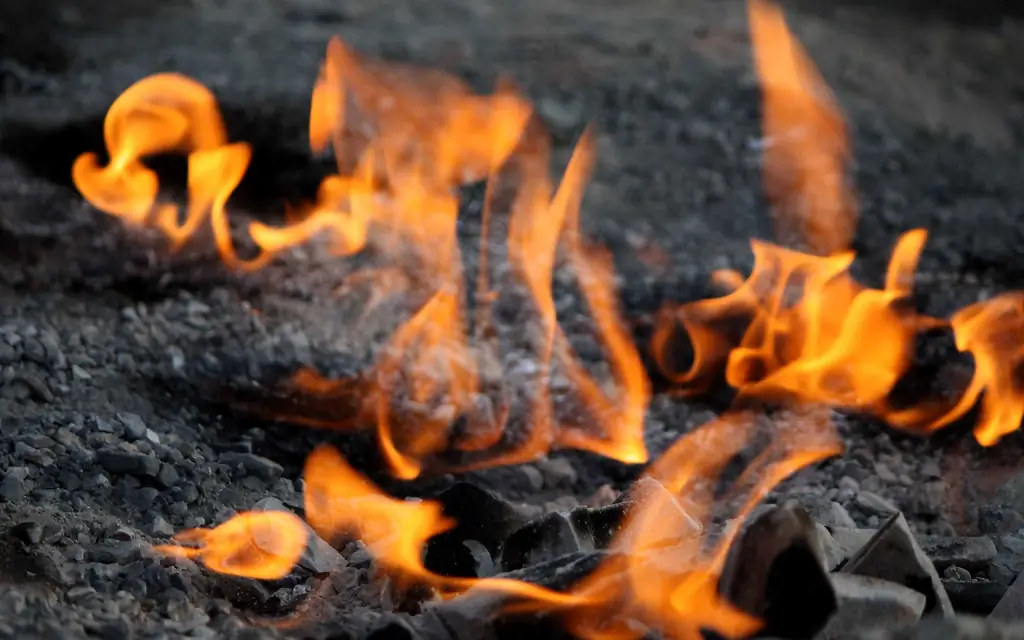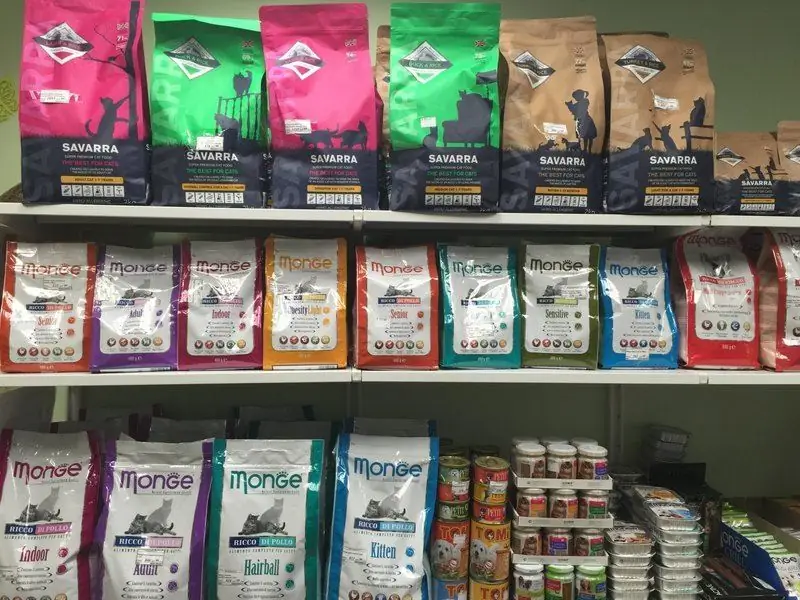
Table of contents:
- How to use ash as fertilizer?
- Difference between wood ash and coal ash, nutrient content
- More on impact on different soil types
- Fertilizing potatoes
- Application for the growth and productivity of other fruit and vegetable crops
- Garden crops that ash will help you grow
- Helping the vineyard
- Use as a fertilizer for garden flowers
- Video about using ash as fertilizer
- Author Bailey Albertson [email protected].
- Public 2023-12-17 12:53.
- Last modified 2025-01-23 12:41.
How to use ash as fertilizer?

The ash left in the stove or fireplace can serve you in the garden and vegetable garden. It is a good fertilizer and has been known as such for a long time. We will tell you how you can use ash on your site. The main thing that needs to be understood first of all is that the quality of the ash and its value depends on what was burned to obtain it.
Content
- 1 Difference between wood ash and coal ash, nutrient content
- 2 More on impact on different soil types
- 3 Fertilizing potatoes
- 4 Application for the growth and productivity of other fruit and vegetable crops
- 5 Garden crops that ash will help you grow
- 6 Helping the vineyard
- 7 Use as fertilizer for garden flowers
- 8 Video on the use of ash as fertilizer
Difference between wood ash and coal ash, nutrient content
Most often, gardeners use wood and coal ash, as well as the one that remains after burning herbaceous plants, to fertilize the soil and fight pests.
Ash can be used as a complex fertilizer because it includes:
- potassium;
- calcium;
- boron;
- phosphorus;
- magnesium;
- manganese;
- iron;
- zinc;
- molybdenum;
- sulfur.
In addition, ash is practically free of chlorine, so it is excellent for fertilizing soils under crops that react negatively to this element, for example, potatoes and berries
Potassium and phosphorus in ash are in the form most readily available for plant nutrition. Natural phosphorus in this case is even better than superphosphate. Therefore, ash can be spread on the soil surface before plowing, or poured into holes prepared for plants.

Ash is a source of essential elements for plants
The potassium content of the ash determines its value. For example, herbaceous plants - sunflower trunks, buckwheat, stalks of cereals, etc., when burned, form a residue, which contains about 36% potassium.
In the production of resin wood, it is better to give preference to deciduous tree species. For example, birch ash contains the most potassium. Peat ash is poor in potassium and phosphorus, but high in calcium.
Ash from coal is not suitable as a fertilizer for a garden or vegetable garden, since it practically does not contain such essential elements as phosphorus, potassium and calcium. But then it contains silicon oxides, up to 60%. This allows it to be used to improve the structure of clayey wet forms, to drain them.
Among other things, coal ash has the following feature. A high sulfur content leads to the appearance of sulfates, therefore, such ash, unlike wood ash, acidifies the soil, and does not neutralize it. Therefore, it is well suited for saline soil, but not applicable for acidic and sandy.
More on impact on different soil types
Now we will discuss what kind of ash should be used for this or that type of soil so that the garden is productive.
- On sandy, sandy loam, boggy and soddy-podzolic soils, it will be enough to add 70 g of ash per 1 sq. surface. This amount will meet the boron requirement of most plants.
- Almost any type of soil (except for alkaline soils) perfectly perceive wood and grass ash, which contains the required amount of alkali: acidic soddy-podzem, boggy and bog-podzolic, gray forest. The soil is enriched, its acidity decreases, and the structure improves. Fertilization is enough to carry out 1 time in 4 years.
- Also, woody and grass or straw ash is well suited for clay and loamy soil and is introduced in the fall for digging. If such ash is used on sandy and sandy loam soils, then it should be applied in the spring.
- Peat and oil shale ash with a lime content of about 80% is commonly used to neutralize soil acidity. Introduced at the rate of 650-670 g per 1 sq.

Wood ash is good at lowering soil acidity
Store ash only in a dry place, as exposure to moisture will wash potassium out of it. In addition, experienced gardeners advise not to mix ash with ammonium nitrate and manure.
If you don't have a scale at hand to determine the required amount of ash, use the following calculations:
- in 1 tsp. contains 2 g of ash;
- in 1 tbsp. - 6 g;
- in 1 matchbox - 10 g;
- in 1 faceted glass - 100 g;
- in 1 can 0.5 l - 250 g.
Now let's take a closer look at how to use ash as fertilizer for plants in your garden and vegetable garden.
Fertilizing potatoes
For a good potato crop, it is of great importance that potassium in wood ash is contained in the form of carbonate salt, and chlorine is absent. The rest of the elements are also very useful for this plant. As a rule, the introduction of 1 kg of the substance into the soil gives an increase in yield by almost 8 kg of tubers.
Wood ash is introduced into the soil for potatoes both in spring and in autumn, before plowing, at the rate of 200-300 g per 1 sq. for economical use, try applying ash directly to the wells when planting, about 1-2 tablespoons in each well. Thus, the amount of fertilizer is reduced by two, or even three times.

Using ash as fertilizer significantly increases potato yields
At the first hilling of potatoes, it is recommended to add ash 2 more tablespoons under the bush. The second hilling is carried out during the period of bud formation. At this time, ash is brought in at the rate of 0.5 cups under a bush.
Peat ash is also used as fertilizer for potatoes, but its nutrient content is lower. To achieve optimal results, it needs to be applied 20-30% more than wood
Ash will not only increase the yield of potatoes, but also improve the taste of the tubers. In addition, it acts as a plant protector against late blight and other diseases and pests. In order to avoid the appearance and development of Colorado potato beetle larvae, the leaves and stems of potatoes are powdered with dry ash. From this effect, the larvae die in a couple of days.
Application for the growth and productivity of other fruit and vegetable crops
Each cultivated plant from which we expect a high yield requires a certain amount of fertilizer and application conditions. Ash will be more effective when used with humus, peat or compost.
- Squash, cucumbers, zucchini will require 1 glass of ash before digging in and 2 tablespoons when planting seedlings in each hole. In the middle of the growing season, you need to add fertilizing at the rate of 1 glass per 1 sq. M., Put it in the soil and water.
- For eggplants, tomatoes and peppers, you need 3 glasses per 1 square meter for digging and a handful in each hole when planting seedlings.
- Under cabbage of any varieties, ash should be added for digging at the rate of 1-2 glasses per 1 square meter, for seedlings - a handful per hole.
- For winter garlic and onions, ash is brought in for autumn digging, 2 glasses per 1 sq. In the spring, it is enough to make top dressing from 1 glass per meter, with soil filling.
- Peas, lettuce, beans, radish, dill, beetroot, radish, parsley, carrots are planted in the spring, after the ash is brought in at the rate of 1 glass per 1 meter for digging.

Ash can be used to fertilize any garden and horticultural crops
Also use ashes to control cruciferous flea and cabbage fly. Make a 1: 1 mixture of ash and tobacco dust, and when 2-3 full leaves are formed on cabbage, radish, rutabaga and radish, dust them.
Garden crops that ash will help you grow






Helping the vineyard
Ash contains an optimally balanced complex of substances necessary for the vineyard to grow and develop. The advantage is that this fertilizer lasts for a long time, and its components are absorbed in the right amount. The potassium in ash is especially important for grapes.
The scheme for using ash, recommended by experienced winegrowers, is as follows:
- In autumn, when the grape harvest is over, each bush is watered abundantly with five buckets of water. Add about 300 g of wood ash to the last bucket.
- In the spring, holes need to be made around the bush. Add about 2 kg of ash to each and cover with soil.
- After a short time (usually at the beginning of summer), the soil under the grape bush is abundantly sprinkled with ash and carefully mulched. This will help stop the development of the fungus, destroy its spores, and also improve the nutrition of the root system after watering and rains.
Wood ash is very good for foliar feeding. You need to fill it with water in a ratio of 1: 2 and leave for 3 days, stirring from time to time. After the solution has settled, the liquid must be drained and so much water added so that the volume increases 3 times. Spray grape bushes with this infusion after the sun sets. Spraying should be uniform on both sides. This will help you cope with fungal infections.

For the growth and productivity of grape bushes, ash is an indispensable assistant
One application of ash to the soil on which the vineyard grows will be enough for almost 4 years. The optimal amount of feeding is once every 3 years.
After harvesting in the fall, or in the spring before preparatory work, old vines are cut and disposed of. If you burn these branches, you will get the most balanced chlorine-free fertilizer for grapes, containing 20-25% potassium and about 17% phosphorus.
Use as a fertilizer for garden flowers
Can you imagine a complete garden without flowers? The healthier their roots, the stronger the trunks and leaves, the more luxuriant and brighter they bloom. And here it is especially important to apply fertilizers correctly.
Ash in this case is optimal both in terms of its qualities and availability. Roses, lilies, marigolds and many others take very well the substances contained in wood and grass ash. And the absence of chlorine, which is harmful to cultivated flowering plants, is especially valuable.
By using ash as a fertilizer for flowers, you will get an effective return in the first year. The most important thing is to know the peculiarities of the soil on your site, so as not to be mistaken when adding ash of one type or another.
In front gardens or flower beds, ash is usually applied in bulk and carefully mulched. In this case, introducing seedlings into the holes before planting seedlings is undesirable, but adding a handful of perennial flowers under each bush will be very useful.

For garden roses, ash is the most common and affordable fertilizer.
Most often, flower ash is used as plant nutrition during its vegetative period.
- for root dressing, take 100 g of ash per 10 liters of water, hold for 2 days and use for watering.
- for foliar feeding, dissolve 200 g of ash in 10 liters of water, leave for 2 days and use for thorough spraying in the evening.
In the same way, ash can be used for indoor plants as long as you have not transplanted them into specially prepared soil that you can buy at the store. There is very little space in a flowerpot compared to open ground, so try to stick to the correct ratios and proportions.
Video about using ash as fertilizer
We are sure that our article will help you make your garden plot more beautiful and more productive. Share with our readers in the comments your experience in this topic, and ask your questions. Let the garden and vegetable garden always delight you! Good luck!
Recommended:
How To Use Eggshells As Fertilizer (in The Garden, For Seedlings And Indoor Plants And Not Only) + Reviews

The properties of the eggshell, its beneficial effect on the soil, plants. Details on the use of shells as fertilizer in the garden, for seedlings and indoor flowers
How To Properly Heat The Stove, Including Coal, Wood, Briquettes In Winter And Summer

Stove heating principles. Step by step instructions on how to properly heat the stove. How to make a fuel briquette yourself
Do-it-yourself Wood Stove - How To Make Economical Wood-fired Stove Heating, Device, Diagram, Drawing, Design With A Water Circuit, Reactive, Iron, Metal, For A Greenhouse + Video

Features and types of wood-burning stoves. Sizing and finding a place to install the oven. Do-it-yourself wood stove installation. Operating a wood-fired oven
Analysis Of Cat Food: Comparison Of Their Composition, From Which Dry And Wet Food Is Made, Analyzer Of Components (ash, Preservatives, Etc.)

What ingredients should be present in cat food and what ingredients should be avoided. How diets differ from each other
Planting Grapes With Cuttings And Seedlings In Spring: Terms And Instructions

When and how grapes are planted in spring, is it better than autumn. How a pit and a seedling are prepared, how is the planting process
